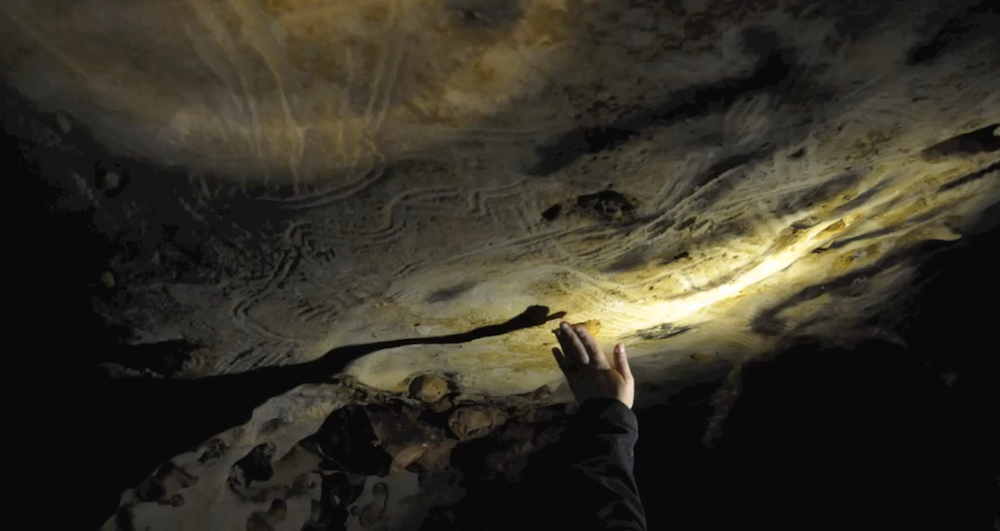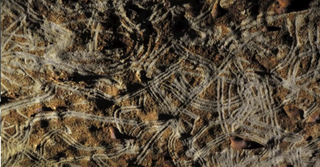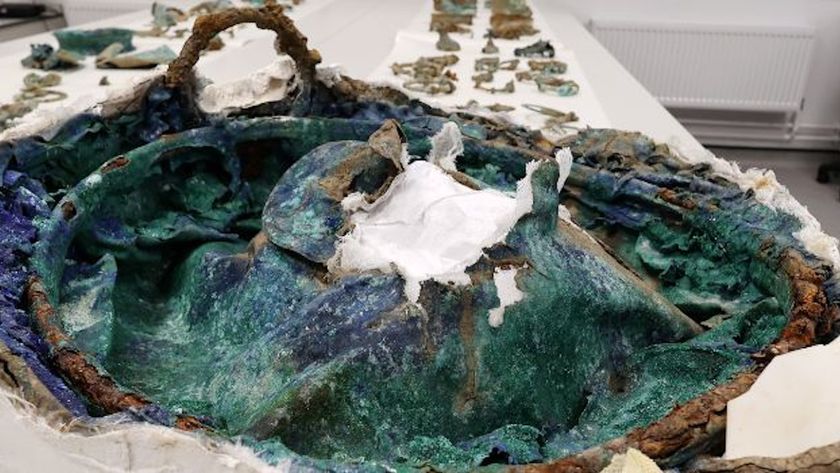Prehistoric Preschool? Paleolithic Kids Finger-Painted in Caves

Among the Paleolithic artists who left behind paint-decorated caves were kids as young as 3, a new study finds.
In fact, finger-painting tots were quite prolific 13,000 years ago in the Cave of a Hundred Mammoths in France, according to Cambridge archaeologist Jess Cooney, who presented her findings last week at a conference on the archaeology of childhood at Cambridge University. The main art form was finger flutings, decorative lines made by people running their fingers along cave walls.
"So far, we haven't found anywhere that adults fluted without children," Cooney said in a statement. "Some of the children's flutings are high up on the walls and on the ceilings, so they must have been held up to make them or have been sitting on someone's shoulders." [Science as Art: A Gallery]
The most prolific child artist, Cooney said, was a girl of 5.
Early artists
The Cave of a Hundred Mammoths at Rouffignac is splashed with ancient paintings of mammoths, horses and rhinoceroses, along with the fluted lines. Archaeologists peg these paintings at 13,000 years old, at minimum. The creators were probably people of the Magdalenian culture, the same group that created the famous cave art at Lascaux, France.

Researchers have known since 2006 that some of the flutings in the cave were created by children. But Cooney and her colleagues measured finger widths from thousands of modern-day people, enabling them to identify precise ages for individuals under the age of 7 based on finger-traces alone. With clear impressions, researchers can also tell with up to 80 percent accuracy whether the child-artist was a boy or girl.
Sign up for the Live Science daily newsletter now
Get the world’s most fascinating discoveries delivered straight to your inbox.
The youngest cave artist appears to have been 3, Cooney said. The researchers have identified four individual children whose work appears multiple times in the cave; of those, two are girls, Cooney said.
Studies of other European cave art suggest that teenage boys were also accomplished graffiti artists, even in prehistoric times.
Children of the cave
"One cavern is so rich in flutings made by children that it suggests it was a special place for them," Cooney said. But researchers don't know whether this Paleolithic kid zone was a play-place or a spot used for some sort of ritual.
In addition to the simple line flutings, there are also cartoon-like flutings of animals and shapes on the cave walls, Cooney said. Some of these shapes are the work of children as well.
"The presence of children is everywhere in the cave," Cooney said, "even in the passages farthest from the entrance."
You can follow LiveScience senior writer Stephanie Pappas on Twitter @sipappas. Follow LiveScience for the latest in science news and discoveries on Twitter @livescience and on Facebook.

Stephanie Pappas is a contributing writer for Live Science, covering topics ranging from geoscience to archaeology to the human brain and behavior. She was previously a senior writer for Live Science but is now a freelancer based in Denver, Colorado, and regularly contributes to Scientific American and The Monitor, the monthly magazine of the American Psychological Association. Stephanie received a bachelor's degree in psychology from the University of South Carolina and a graduate certificate in science communication from the University of California, Santa Cruz.











